The recent online lessons have not only driven teachers and students crazy, but parents are also very anxious. In addition to worrying about their children’s inattention in class, they are also worried that watching the screen for a long time will affect their vision.
“The myopia rate of students is now high. I was afraid that my eyes would be blind in the last week or two.” There are a lot of similar comments on the Internet.

▲ Photo from: “Nature”
Twenty years ago, a few people wore glasses. Until now people are accustomed to wearing glasses with “cultural”, but now on campus, it is strange to not wear glasses. According to the Big Data of National Visual Health Report released by People’s Network in 2019, At present, there are about 600 million patients with myopia in China, of which more than 100 million are primary and secondary students.
This is not a Chinese characteristic. Myopia is showing signs of flooding all over the world. The World Health Organization estimates that by 2020, approximately 2.6 billion people around the world will have varying degrees of myopia, of which 312 million will be adolescents and children under the age of 19.
Myopia is so common that people are a little numb, and they do n’t have to wear pair of glasses. They can still have surgery. It does n’t seem to be a big deal. Is it really?
Why are there more and more people with myopia?
Although the principle of myopia is not complicated, it is common that the light cannot be focused on the retina due to the longer axis of the eye, but the reason for the lens mutation has not been fully understood.
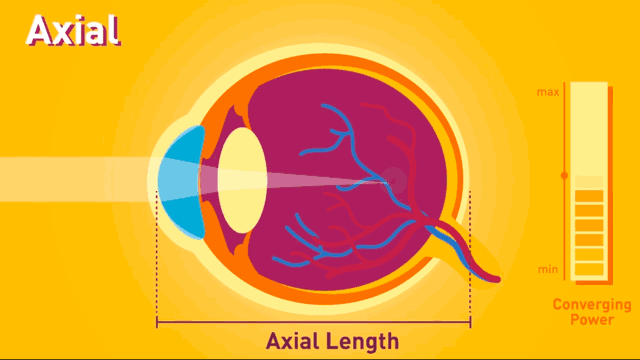
▲ Picture from: Sina a>
It is widely accepted that myopia is derived from heredity, parents have high myopia, and their children have a higher probability of myopia. Scientists have also been working to find genetic sites that may induce myopia. The formation of myopia is not caused by a single gene Site control is the result of multiple mutant proteins interacting with each other. Related research has found 18 possible gene loci. People who carry these genes have a ten-fold higher risk of myopia than others.
Note that the gene loci that may be related to myopia are found. Although this possibility is very high, it cannot explain the phenomenon of the myopia population in modern society. “It is impossible for a gene bank to change so much in one generation, even for several generations. “ Australian National UniversityProfessor Ian Morgan points out.
Inuit’s sudden increase in myopia is typical. In 1969, a research of Inuit in northern Alaska showed that 131 Only two adults in remote communities are short-sighted, but more than half of their children are short-sighted. Slow genetic changes obviously cannot explain this mutation. The most obvious difference between myopia and Inuit and their parents is that the former accept Education, that is, reading too much.

▲ Picture from: WHO
So the environmental impact is starting to be taken into account. For example, when it comes to myopia, especially adolescent myopia, people generally blame it for the heavy academic burden. The World Health Organization report also supports this view. The report shows that the high-income countries in the Asia-Pacific region have the highest myopia rate, reaching 53.4. %, Followed by West Asia with 51.6%, and the myopia rate of urban adolescents in China and South Korea with heavy schooling is as high as 67% and 97%.
Students with glasses may not be too hard at reading, but they may just be playing more video games. The ever-changing electronic products, especially the increasingly delicate screens, seem to have surpassed their homework and become the culprits affecting eyesight. Therefore, many parents will want to rely on so-called anti-blue light glasses, but in fact the normal blue light intensity is not enough Inducing eye diseases, wearing blue light glasses can only relieve visual fatigue at most, and has little effect on preventing myopia. Compared with blue light, too much contact with electronic products leads to an increase in myopia, which may be due to the use of close eyes and excessive use of eyes.
Questioned eye exercises
Since the formation mechanism of myopia has not yet been clarified, prevention seems to be a blind image. Among the various preventive measures, the most metaphysical atmosphere is the familiar eye exercises.
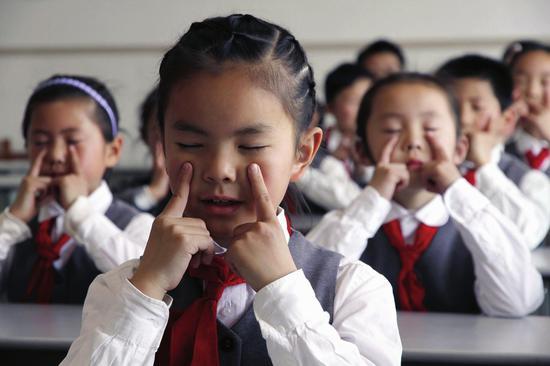
▲ Picture from: Sina
“Kneading the Tianying acupoint, squeezing the eyes and acupoints, rubbing the four white acupoints, and rubbing the eye sockets …” From these nouns, it is not difficult to see that the theoretical basis of this set of eye exercises originates from the points of traditional Chinese medicine. Liu Shiming, a sports teaching and research department of Beijing Medical College (now the Peking University School of Medicine), is a Chinese medicine enthusiast. As early as 1963, this set of eye exercises had been promoted in Beijing. It was simplified by experts in the 1970s and spread throughout the country.
That is to say, half a century has passed since the birth of eye exercises. It can be said that it is a common memory of generations of students. It was not until Fang Zhouzi questioned in 2007 that people began to reflect on the usefulness of eye exercises for so many years. For example, when acupoints are massaged, bacteria on the hands may enter the eyes and cause infections. There is no such thing as acupuncture points in modern medicine.
Since eye exercises have evolved from the theory of traditional Chinese medicine, the problem has become a dispute between TCM and modern medicine. It is not easy for us to draw conclusions about who is right and who is wrong, but it is clearly written in the new 2008 manual of eye exercises. This exercise is mainly used to “relieve eye fatigue”, and there is no mention of preventing myopia.

▲ The new version of eye exercises has reduced direct contact between hands and eyes. Picture comes from: Phoenix Network
Instead of tossing those points, “going out” may be a more effective way to prevent myopia. Numerous studies have shown that the longer adolescents spend outdoors, the more likely they are to avoid wearing glasses. Interestingly, playing sports indoors does not have the same effect, experts attribute it to the difference in light.
Some opinions suggest that the brighter light outside causes the retina to secrete dopamine. This dopamine can slow down the growth of the eyeball, keep the eyeball in a smaller shape, and avoid or reduce the risk of myopia. Some experts have also questioned this, thinking that the key to affecting myopia is not the light, but the wider field of vision when people are outdoors.
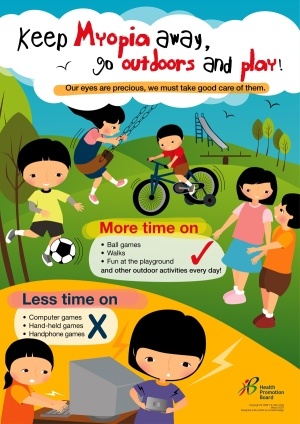
▲ Picture from: “Nature”
In short, Western medicine has not been able to provide a 100% reliable method for preventing myopia, but it is the consensus of most people that the eyes are more relaxed when people are outdoors, regardless of light or field of vision. The Ministry of Education issued a “Implementation plan for comprehensive prevention and control of myopia in children and adolescents” also mentioned that it should be increased Outdoor activities and exercise, “allowing children to spend more time outdoors in the sun can effectively prevent and control myopia.”
Corrective surgery: cure the symptoms but not the root cause
The cause is unknown, and the prevention mechanism is still in the exploratory stage, but the treatment of myopia has a clear direction. To be precise, it should be called correction, and everyone must have heard of the plan: laser surgery. According to different methods, laser surgery on the market can be divided into full femtosecond, half femtosecond surgery, and Trans-PRK, etc., but the principle is the same, that is, the laser “modify” the cornea, change its curvature, to achieve the purpose of vision correction .
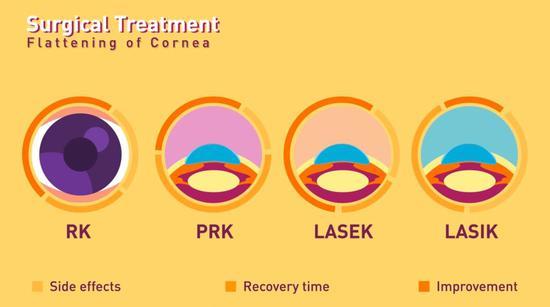
▲ Comparison of the principles, side effects and effects of different surgical methods. The picture comes from: Sina
If the cornea is too thin, it is not suitable for this type of corrective surgery. Fortunately, in 2018, Sinisa Vukelic and Chao Wang’s team at Columbia University announced a surgical method called “non-invasive femtosecond laser corneal cross-linking” that brings hope to such patients.

▲ Picture from: Nature Photonics
The principle of surgery is to irradiate the corneal area with a low-energy, high-frequency femtosecond oscillating laser, change its internal tissues, and modify the curvature of the cornea. The advantage is that it is not limited by the thickness of the cornea, and the absence of an incision will reduce postoperative symptoms such as dry eyes. However, the operation is still in animal experiments, and it is still far from large-scale commercial use.
Myopia may be more serious than you think
The myopia that puzzles humans is more than just a pair of spectacles on the bridge of the nose, or an additional surgical fee.
High myopia (> 600 degrees for adults,> 400 degrees for children) is usually accompanied by complications such as retinopathy. In severe cases, it can develop into irreversible blindness, and the risk of developing eye diseases such as cataract and glaucoma is higher. Even if the degree is low, career choices may be limited, and missed majors such as flight, navigation, and reconnaissance, which have strict requirements on vision, and affects more than just personal development.
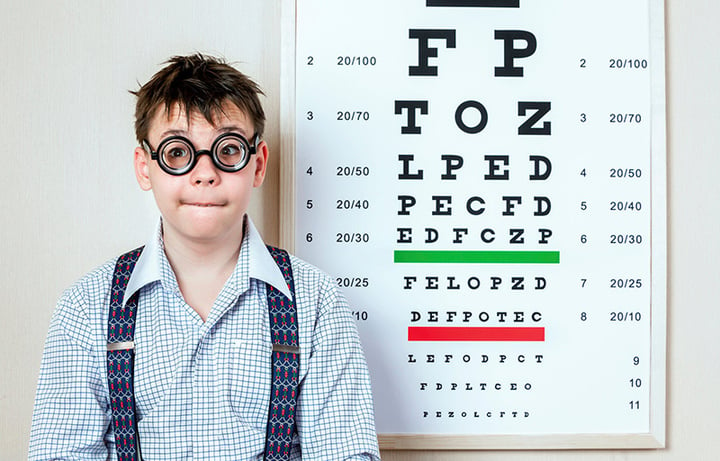
▲ Picture from: busy.org
The National Visual Health Report has linked myopia to GDP. The report states that in 2012, the socioeconomic costs caused by various types of visual impairment were between 6820 and 692 billion yuan, accounting for The proportion of GDP in that year exceeded 1.3%.
“Now the incidence of myopia is so high that many occupations such as national defense and precision instruments will not be recruited in the future.” Li Ling accepted ” China Youth Daily “ admitted in the interview,” In fact, our country has relaxed its vision standards for recruiting troops every year in recent years, but it still does not recruit enough people. “
Everyone knows the reason, but let students who are busy in educational arms races take precious time to walk outdoors. I am afraid that parents may be willing, and students may not be happy. Are mobile phones and computers not fragrant? Even when many parents are worried that the online class will deepen their children’s degree, some people are self-deprecating and half-serious self-consolation: “It doesn’t matter, I don’t take online classes, and I will be short-sighted sooner or later.”